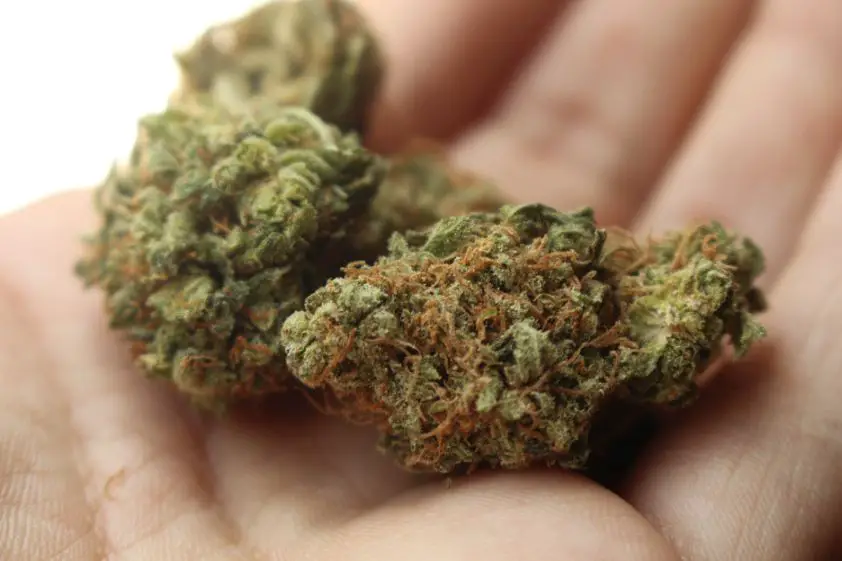
CommonCentsMom.com is advertiser-supported: we may earn compensation from the products and offers mentioned in this article. However, any expressed opinions are our own and aren't influenced by compensation. The contents of the CommonCentsMom.com website, such as text, graphics, images, and other material contained on this site (“Content”) are for informational purposes only. The Content is not intended to be a substitute for professional financial or legal advice. Always seek the advice of your Financial Advisor, CPA and Lawyer with any questions you may have regarding your situation. Never disregard professional advice or delay in seeking it because of something you have read on this website!
As medical marijuana gains traction in healthcare, understanding its prescription parameters becomes imperative. This study delves into the role of physicians in determining a patient’s suitability for cannabis treatment, explores the potential risks and side effects, and provides an analysis of case studies to offer a comprehensive view on the subject.
The objective is to demystify the medical use of marijuana, an increasingly relevant topic in contemporary medicine.
Understanding the Medical Use of Cannabis
The medical use of Cannabis pertains to the therapeutic application of this plant’s compounds, primarily Tetrahydrocannabinol (THC) and Cannabidiol (CBD), which have been found to alleviate symptoms in a variety of health conditions. The efficacy of these compounds is largely dependent on the Cannabis cultivation techniques employed, with specific growing conditions required to optimize the production of THC and CBD.
Scientific research suggests that these compounds can reduce chronic pain, nausea, and muscle spasms, and they may also help to alleviate symptoms of conditions such as epilepsy, multiple sclerosis, and PTSD. However, the potency and purity of the cannabinoids can be influenced by the cultivation methods, with factors such as light, temperature, and nutrient levels playing a critical role.
The legal implications of medical Cannabis use vary widely around the globe, with some jurisdictions allowing for its use under certain conditions while others maintain strict prohibitions. This legal context greatly impacts the availability and use of medical Cannabis, with restrictions often leading to difficulties in patient access and inconsistencies in product quality.
Understanding these complexities is crucial for healthcare providers, paving the way for the subsequent discussion on the role of doctors in prescribing medical marijuana.
The Role of Doctors in Prescribing Medical Marijuana
Assessing the potential benefits and risks associated with cannabis-based treatments, constitutes an essential responsibility for healthcare professionals. Such an assessment requires comprehensive doctoral training in the pharmacology of cannabinoids and the endocannabinoid system. Additionally, knowledge of the legal implications surrounding the prescription of medical marijuana is necessary, given the complexity and variability of laws across jurisdictions.
Evidence-based medicine is paramount, and therefore, doctors should be familiar with the scientific literature on the therapeutic uses, potential adverse effects, and contraindications of cannabis. This ensures that patients are not only treated effectively but also safeguarded from potential harm.
Furthermore, a physician’s role, as guided by the Doctor’s recommendation for MMJ, extends beyond the prescription of cannabis. It includes educating patients about the safe use of medical marijuana, monitoring their response to treatment, and adjusting dosages as necessary.
In terms of legal implications, doctors must adhere to regulations established by respective medical boards and government bodies. Non-compliance could result in legal ramifications, including the loss of licensure.
The discussion on the doctor’s role in prescribing medical marijuana, thus provides an essential foundation for the subsequent section. A comprehensive understanding of these aspects is crucial before delving into the criteria for evaluating patients’ suitability for medical marijuana.
Criteria for Evaluating a Patient’s Suitability for Medical Marijuana

Evaluating a patient’s eligibility for cannabis-based treatment involves a thorough review of their medical history, current health status, and previous responses to conventional treatments. Essential criteria include the disease’s progression, the severity of symptoms, and the patient’s overall quality of life. Cannabis Legislation plays a crucial role in this process, dictating the conditions for which medical marijuana can be prescribed. Some jurisdictions only allow its use for specific illnesses such as epilepsy and chronic pain, while others have more inclusive regulations.
Patient Privacy also forms a central aspect of this evaluation process. Health care providers must safeguard the sensitive information gathered during these assessments, ensuring that it is used solely for determining treatment suitability. This requires robust data security measures and adherence to privacy laws.
The suitability evaluation is not solely based on medical factors. Social, psychological, and lifestyle factors are also considered, as these can impact the effectiveness of cannabis-based treatments. In particular, the potential for substance misuse or a history of mental health disorders may deem a patient unsuitable for such treatment.
This comprehensive evaluation provides a foundation for understanding the potential risks and side effects of medical marijuana, an area to be scrutinized in the subsequent section.
Potential Risks and Side Effects of Medical Marijuana
Understanding the potential risks and side effects of cannabis-based treatments is crucial, as these may include dependency, cognitive impairment, and potential interactions with other prescribed medications. The probability of Cannabis dependence increases with prolonged use, especially when initiated at an early age or used daily. As a result, this dependency can lead to the development of Cannabis Use Disorder, characterized by an uncontrollable craving, tolerance, and withdrawal symptoms.
Concerning cognitive impairment, research shows that long-term cannabis use can affect memory, attention, and decision-making abilities. These impacts may persist even after discontinuation of use, thus underscoring the importance of considering the long-term impacts of cannabis use. Additionally, cannabis can interact with other medications, potentially altering their effectiveness or increasing their side effects.
This evidence suggests that physicians must exercise caution when prescribing medical marijuana, carefully weighing the potential benefits against the risks. It is important to note that our understanding of these risks is continually evolving, with ongoing research providing new insights.
This leads to the importance of examining case studies to understand doctors’ experiences with medical marijuana, which will be the focus of the subsequent section.
Case Studies: Doctors’ Experiences With Medical Marijuana

Case studies offer valuable insights into practitioners’ experiences with cannabis-based treatments, providing a practical perspective on their potential benefits and risks. Notably, these studies highlight the complexity of navigating the legal challenges associated with medical marijuana. From jurisdiction to jurisdiction, laws vary significantly, leading to pronounced uncertainties for health professionals recommending or prescribing cannabis-based treatments.
Further complicating the situation is the pharmaceutical opposition to cannabis-based treatments. Existing scholarship indicates that this opposition is rooted in multiple factors. Firstly, the lack of standardized dosages and administration methods for cannabis-based treatments presents a direct contrast to traditional pharmaceutical drugs. Secondly, the financial implications of a plant-based medicine that could potentially be grown by patients themselves pose a threat to the profitability of pharmaceutical companies.
Despite these challenges, case studies demonstrate that practitioners are increasingly open to integrating cannabis-based treatments into their practice. This openness is driven by growing evidence of the potential therapeutic benefits of medical marijuana for a range of conditions, including chronic pain, epilepsy, and multiple sclerosis, among others. However, more research is needed to fully understand the long-term effects of these treatments, underscoring the need for continued scientific inquiry into medical marijuana.
Conclusion
In conclusion, the realm of medical cannabis remains shrouded in ambiguity, symbolically akin to a labyrinthine journey. Despite the potential therapeutic benefits, discerning the suitability of patients necessitates meticulous scrutiny from medical professionals.
Understanding the nuanced risks and side effects is pivotal. The experiences of clinicians serve as a beacon, illuminating the path towards responsible, evidence-based application of this ancient plant in contemporary medicine.







